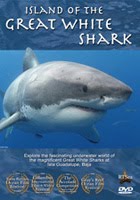 Just a little over a week ago, I posted information about new regulations for longline fishing in Hawaii and Florida that would further imperil the loggerhead turtle. Several conservation groups were engaged in legal action with the National Marine Fisheries Service to get them to act on behalf of the endangered turtles by implementing required provisions of the Endangered Species Act.
Just a little over a week ago, I posted information about new regulations for longline fishing in Hawaii and Florida that would further imperil the loggerhead turtle. Several conservation groups were engaged in legal action with the National Marine Fisheries Service to get them to act on behalf of the endangered turtles by implementing required provisions of the Endangered Species Act. In a more positive development, the National Oceanic and Atmospheric Administration (NOAA) has proposed designating 70,000 square miles along the U.S. west coast, from Northern Washington to Southern California, as critical habitat for another endangered sea turtle, the leatherback turtle.
In a more positive development, the National Oceanic and Atmospheric Administration (NOAA) has proposed designating 70,000 square miles along the U.S. west coast, from Northern Washington to Southern California, as critical habitat for another endangered sea turtle, the leatherback turtle.This ruling would provide a measure of protection for these turtles when they come to forage after their long Pacific migration. Every summer and fall, leatherback turtles travel 12,000 miles - the longest migration of any marine reptile in the oceans today - from nesting grounds in Indonesia to the western U.S. coastline to feed on jellyfish, a favorite food source of many sea turtle species. And these are BIG sea turtles, reaching lengths of nine feet and weighing in at 1,200 pounds! But they are on the edge of extinction; according to the Monterey Bay Aquarium, their numbers within the past 30 years have dropped by as much as 95 %, well below what many aquatic species can recover from.
There are two hiccups with NOAA's proposal, according to the conservation groups (The Center for Biological Diversity, Oceana, and the Turtle Island Restoration Network) who have been applying the pressure for this habitat designation. One, this is only a proposal, so there will be a public comment period open until March. You can expect opposition comments from the longline fishing industry, so if you would like to add you own voice in support, here is a link to NOAA's public response web site.
The second issue is that the proposal leaves out some key foraging areas and excludes fishing gear as a threat. This hearkens back to the same issue with Hawaii's and Florida's loggerhead turtles - the impact on their numbers from accidental catch by longlines.
 “Today’s proposal marks the first step in making sure that these giant turtles have a safe and productive place to feed after their amazing swim across the entire Pacific Ocean,” said Andrea Treece, an attorney with the Center for Biological Diversity, in an Oceana press release. “NOAA now needs to take the next step and improve its proposal by incorporating more of the species’ key habitat areas and addressing one of the worst threats to leatherback survival – entanglement in commercial fishing gear.”
“Today’s proposal marks the first step in making sure that these giant turtles have a safe and productive place to feed after their amazing swim across the entire Pacific Ocean,” said Andrea Treece, an attorney with the Center for Biological Diversity, in an Oceana press release. “NOAA now needs to take the next step and improve its proposal by incorporating more of the species’ key habitat areas and addressing one of the worst threats to leatherback survival – entanglement in commercial fishing gear.”






No comments:
Post a Comment